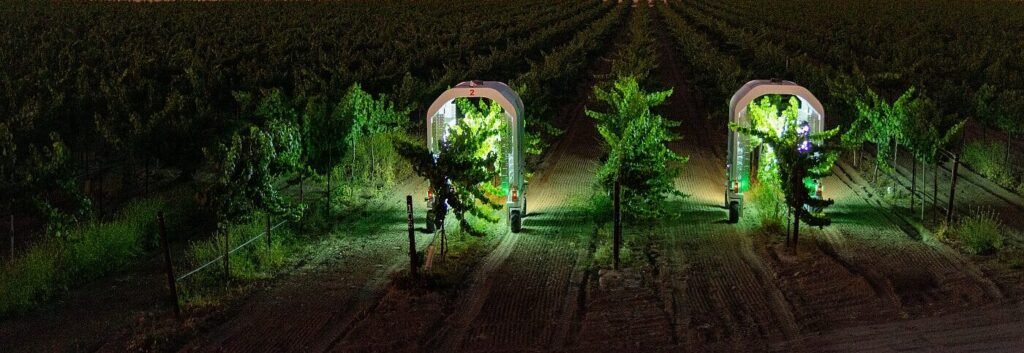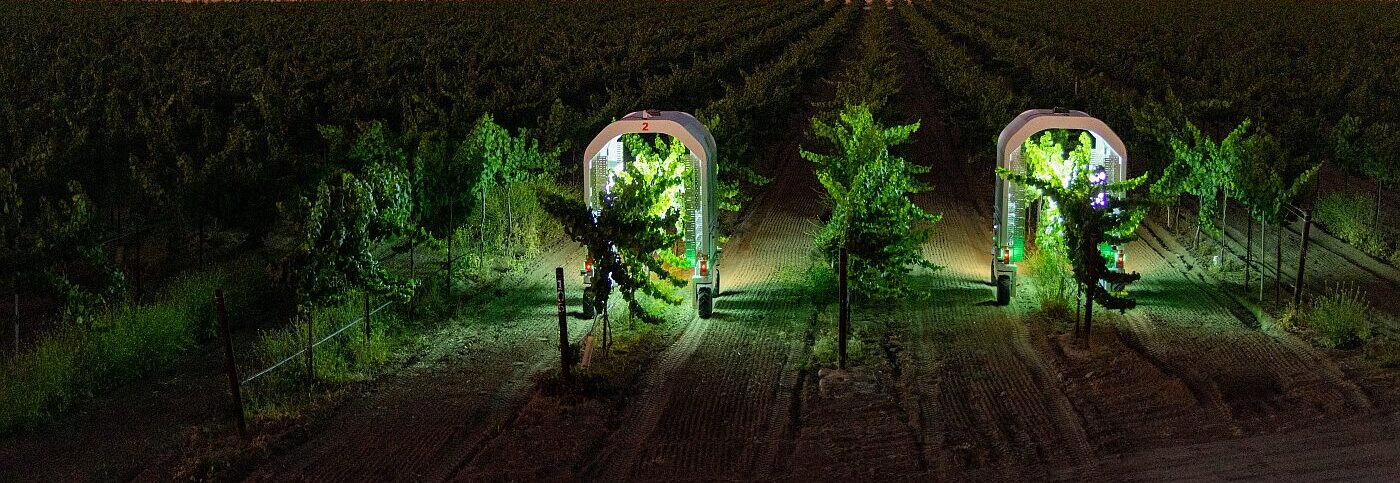
Historically, wine growers have deployed a range of measures to combat powdery mildew, from fungicides to canopy management. But what if you could tackle the problem with light?
AgFunderNews headed to Santa Maria, California, to explore a partnership between the Bien Nacido Estate—which grows Chardonnay, Pinot Noir and Syrah—and Norwegian startup Saga Robotics, which has developed autonomous ‘bots that blast powdery mildew with UV-C.
We caught up with Bien Nacido Estate vineyard manager Greg Gonzalez in Santa Maria and Saga Robotics cofounder and US general manager Pål Johan From in Santa Barbara to discuss:
- How do Saga’s Thorvald robots work, and what else can they do aside from apply UV-C?
- What are the advantages of UV-C over spraying and what’s the business case to wine growers?
- How is Bien Nacido testing the technology and incorporating it into the vineyard?
- What’s the best approach to implementing new tech in the vineyard so that everyone is on board?
- How reliable are the robots?
- How important is initial planning to ensure successful implementation?
- What kind of growth is Saga Robotics seeing in California’s vineyards?
‘We’ve proven the tech works, now we’re scaling it’
Founded in 2016 by Dr. Pål Johan From and Dr. Lars Grimstad, Saga Robotics’ Thorvald autonomous platform now supports 13 leading strawberry growers in the UK and 1,300+ acres of vineyards in California, where powdery mildew is a growing problem.
The firm aims to triple its footprint in US vineyards and increase its penetration of the UK tabletop strawberry market to 30% next year after raising an $11.2 million round to “transition from initial market traction to large-scale commercial adoption,” said From, who has relocated to California to lead Saga’s US operations.
“We’ve proven Thorvald works; now we’re scaling it.”
Like many players in the space, Saga operates a Robots as a Service (RaaS) model, whereby growers pay a fee per acre to treat their crops rather than buying the ‘bots outright.
Given existing fungicides to tackle powdery mildew are becoming less effective, growers often see a return on their investment through higher yields (as UV-C is more effective) as well as reduced labor costs.
Moving forward, Saga is adding value to the battery-powered Thorvald platform with additional offerings, from adding beneficials (insects or mites that are introduced to control pest populations biologically) to data collection for disease detection and yield prediction, to tools to cut runners.
For yield prediction, which has just started generating commercial revenue for Saga this year, said From, “We typically collect data such as how many clusters [of grapes] do you have? What’s the size of the clusters? What’s the size of the berries? And then we can use that to predict the yield. In strawberries, you can simply count the flowers, which will give you an early indication of what your yield will look like.
“We can also recognize outbreaks of diseases and pests.”

Further reading:
Saga Robotics raises $11.2m to expand fleet of ‘bots blasting powdery mildew with UV-C light
Armed with fresh funds, TRIC Robotics plans aggressive fleet expansion across CA’s strawberry fields
The post 🎥‘Like a Roomba for vineyards…’ Bien Nacido puts Saga Robotics’ UV-C robots to the test appeared first on AgFunderNews.